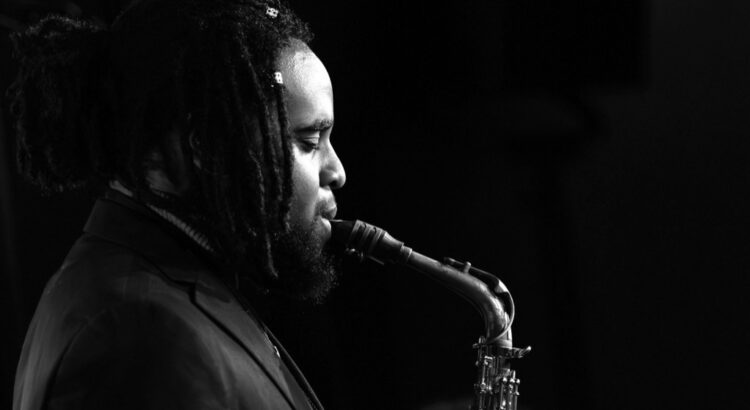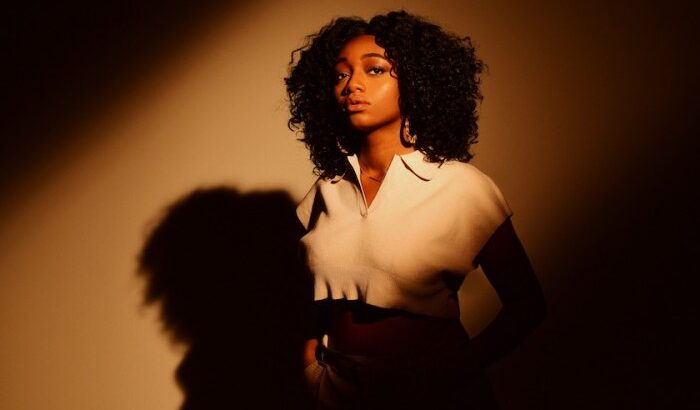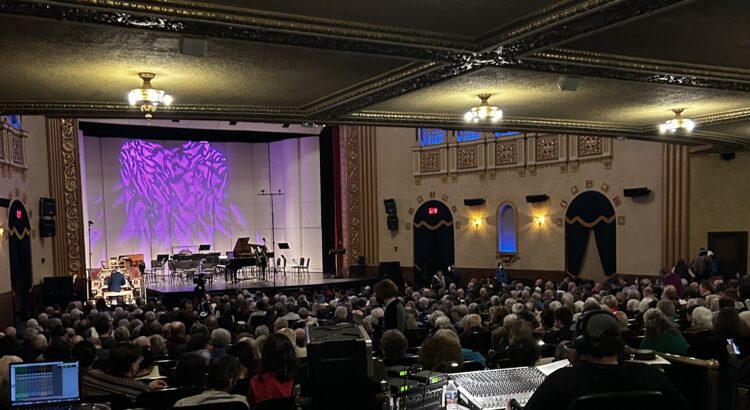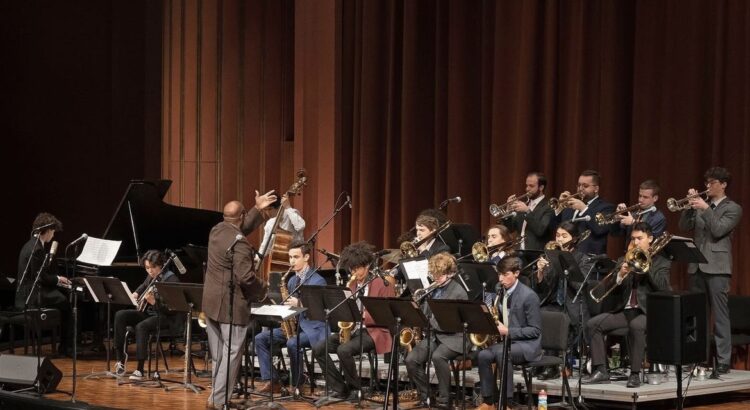The Blue Llama is one of the most iconic jazz venues in Ann Arbor, bringing in top-tier performers from all around the world. Hosting the Friday late-night performance on March 29th was Detroit saxophonist Houston Patton and his Quartet.
Patton’s quartet features Detroit musicians Liam Charron (piano), Dylan Sherman (bass), and Stephen Oduro (drums), a powerhouse group led with sensitivity, joy and momentum. This young quartet performs with a level of experience beyond their years, showcasing remarkable agility, technicality, and charisma. Their set featured the quartet members’ original music, with songs written by Patton and Charron.
I appreciate young musicians’ priority for creating and performing new music—especially their own. The jazz canon is filled with great Standards that are well to learn, but to create innovation and excitement lies within what’s new, and currently being created. Patton’s style emulates that of a modern musician with a deep understanding of the canon, and what to do to improve it.
Patton played a variety of his own tunes (as I am writing this the names are escaping me), which ignited an electric energy in the room. I adored each of the different tunes that were picked, each with fleshed-out and thoughtful contemporary musical ideas. The band was locked in and present with one another, playing with sensitivity to Patton’s choices and leadership.
Patton’s playing is close to that of a firecracker—colorful, unexpected, and wildly exciting. Patton’s beaming personality made for a strong bandleader and comfortable host. He has an ease with the audience, allowing joy to effortlessly resonate through the intimate Blue Llama lounge.
The one tune that was not that of Patton’s was the great Detroit saxophonist, Kenny Garrett’s “Wooden Steps”. It’s evident of Patton’s deep appreciation and emulation of Kenny Garrett in his playing. The percussive quality Garrett brings to the saxophone, coupled with his bright tone are traits that Patton has incorporated into many facets of his performance. “Wooden Steps” was performed with incredible spunk and vivacity, making it one of my favorite tunes from the set.
Patton’s Quartet ignites a beacon of inspiration for young players and illuminates limitless possibilities for the next generation of jazz.
March 30th, 11pm. Photo thanks to The Blue Llama.







